Introduction to Rhinoceros 3D
By Diego Fernández , Industrial Designer and Teacher
Develop an efficient workflow and master the software's essential tools to model with logic and precision
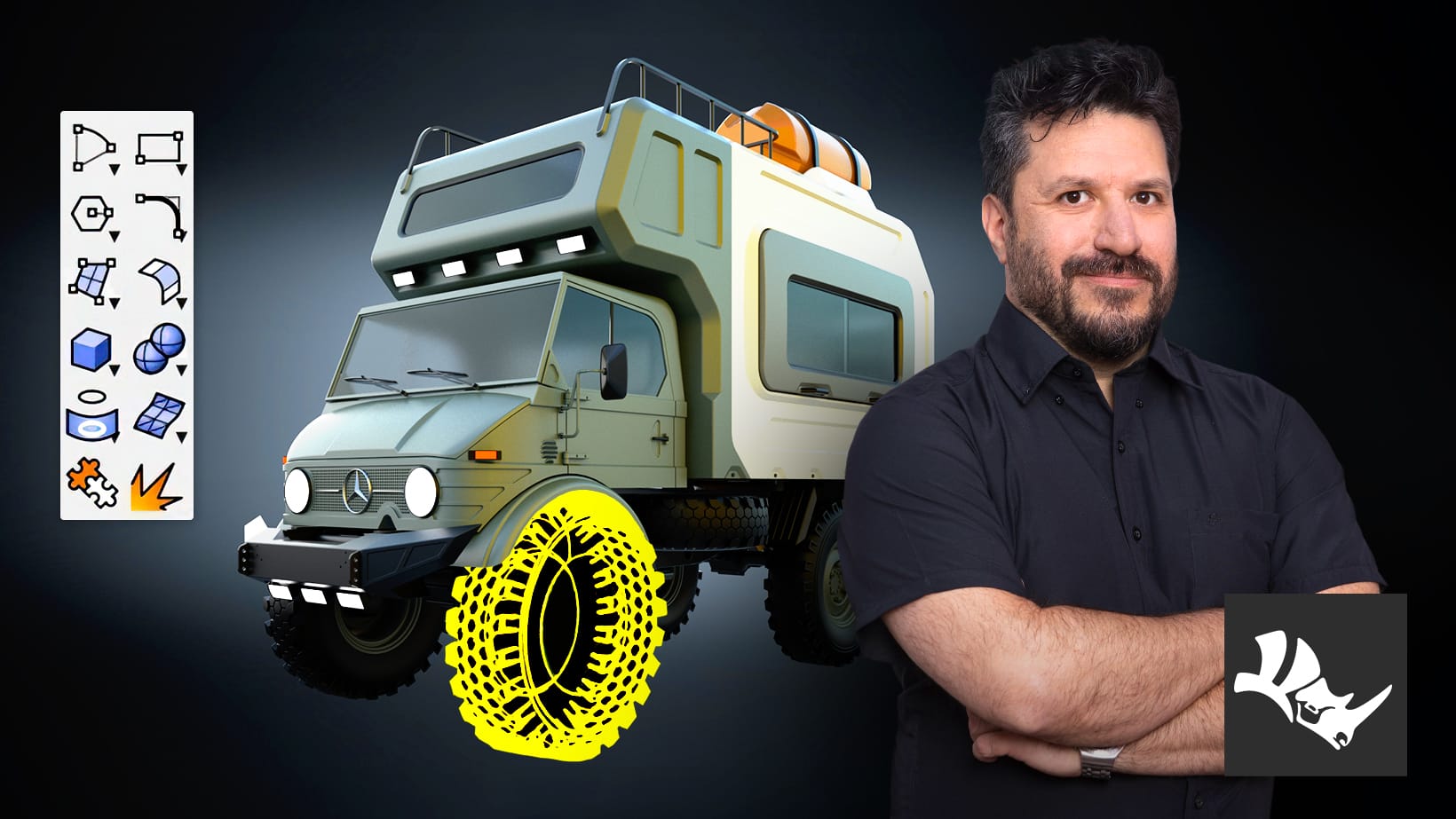
Develop an efficient workflow and master the software's essential tools to model with logic and precision
Domestika Basics · 6 courses included
-
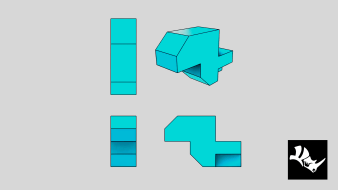
Course 1: Introduction and Basic Concepts
By Diego Fernández
Understand Rhino’s 3D environment and work mechanics to start modeling
-
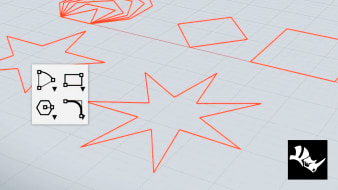
Course 2: Modeling Units
By Diego Fernández
Experiment with points, lines, curves, circumferences, and other basic 2D units.
-
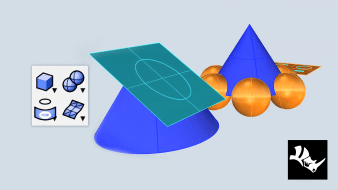
Course 3: Editing Tools
By Diego Fernández
Edit your units and organize your workspace to optimize your modeling process.
-
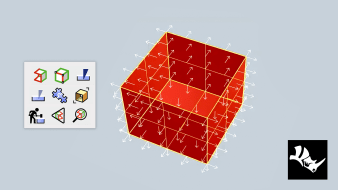
Course 4: Surfaces, Solids, and Boolean Operations
By Diego Fernández
Learn how different shapes interact to add details and create new elements.
-
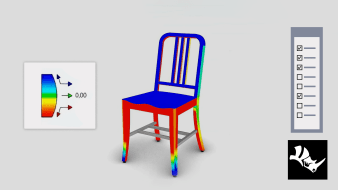
Course 5: The 3D Modeling Process
By Diego Fernández
Develop your own workflow and gain a thorough understanding of the 3D modeling process.
-
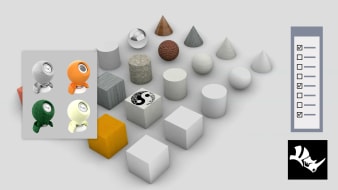
Course 6: Previewing
By Diego Fernández
Create realistic materials for your designs and find the best perspective to display them.
Whether it’s aviation or a children's toy, design, model, and construct your ideas with precision using Rhinoceros. This editing program allows you to model multiple designs for a single project and tackle any 3D shape your brain can imagine.
Join teacher and industrial designer Diego Fernández and learn the basics of 3D modeling in this 6-course Domestika Basics. Become proficient in Rhinoceros and develop an efficient workflow you can use in future projects.
Start by reviewing the basic notions of geometry you need to understand Rhino's 3D environment and familiarize yourself with different parts of the program like the interface, work mechanics, and basic functions so you can start modeling.
Next, learn how to work with basic 2D units in Rhino: points, lines, curves, circumference, polygons, etc. Use these elements to create a precise design that acts as a base you can later build your 3D project on top of.
In the third course, learn how to edit the units you already created and lay the groundwork for the upcoming modeling phases. Diego shares some tips on how to streamline your workflow and shows you how to organize your workspace.
In the next course, create surfaces and solids in order to understand the logic involved in Boolean operations. Work with the different surface tools and see how each one is applied to 3D modeling.
At this point, Diego teaches you how to combine the tools you've learned so far to develop your own workflow in Rhinoceros’s 3D environment and have a thorough understanding of the 3D modeling process.
Finally, learn how to present your projects using renders to create a realistic representation of an object’s material composition. Create materials, add images to your models, and find the best perspective for an impressive presentation.
Technical requirements
⦁ A computer with a video card compatible with OpenGL 4.1 and 4 GB of video RAM.
⦁ Rhinoceros 6 or later.
⦁ The 90-day free trial version of Rhinoceros 7
⦁ A mouse with a scroll wheel is recommended.
- 100% positive reviews (234)
- 8,850 students
- 40 lessons (7h 9m)
- 6 courses
- 23 downloads (17 files)
- Online and at your own pace
- Available on the app
- Audio: Spanish
- Spanish · English · Portuguese · German · French · Italian · Polish · Dutch
- Level: Beginner
- Unlimited access forever
Reviews

Diego Fernández was born in Buenos Aires, Argentina and has made a career out combining his passion for industrial design with teaching. Since 2003, he has been teaching morphology applied to industrial design in the Architecture, Design, and Urban Planning Department at the University of Buenos Aires He also has an impressive portfolio of design work including home and office furniture, advertising architecture and packaging, and toy and candy design.
Diego doesn’t like to be static and is continually developing conceptual and technical tools to improve his work. He subscribes to the idea that professional formation must be consistent, as evidenced by his latest endeavor into digital sculpting.
Content
Course 1: Introduction and Basic Concepts
-
U1
Welcome
-
Welcome
-
-
U2
Installation
-
Installation
-
-
U3
Representation systems
-
Representation systems
-
-
U4
Rhino environment
-
Rhino environment
-
-
U5
Geometry basics
-
Geometry basics
-
-
U6
Lines and curves
-
Lines and curves
-
-
U7
Work planes, snaps, and display modes
-
Work planes, snaps, and display modes
-
-
U8
To practice!
-
To practice!
-
Course 2: Modeling Units
-
U1
Welcome
-
Welcome
-
-
U2
Points, lines and polylines
-
Points, lines and polylines
-
-
U3
Curves
-
Curves
-
-
U4
Circles, ellipses and arcs
-
Circles, ellipses and arcs
-
-
U5
Rectangles and polygons
-
Rectangles and polygons
-
-
U6
Curve tools
-
Curve tools
-
-
U7
To practice!
-
To practice!
-
Course 3: Editing Tools
-
U1
Welcome
-
Welcome
-
-
U2
Join, divide, cut, explode
-
Join, divide, cut, explode
-
-
U3
Groups
-
Groups
-
-
U4
Transformations
-
Transformations
-
-
U5
Checkpoints
-
Checkpoints
-
-
U6
To practice!
-
To practice!
-
Course 4: Surfaces, Solids, and Boolean Operations
-
U1
Welcome
-
Welcome
-
-
U2
Generative units, operations and systems
-
Generative units, operations and systems
-
-
U3
Surfaces and solids
-
Surfaces and solids
-
-
U4
The operations between solids
-
Boolean operations
-
-
U5
Curves from objects
-
Curves from objects
-
-
U6
Editing surfaces
-
Editing surfaces
-
-
U7
To practice!
-
To practice!
-
Course 5: The 3D Modeling Process
-
U1
Welcome
-
Welcome
-
-
U2
Understanding the views of the object
-
Understanding the views of the object
-
-
U3
Efficiency in the design of the drawing
-
Efficiency in the design of the drawing
-
-
U4
Drawing of the views
-
Drawing of the views
-
-
U5
Raising the drawing to 3 dimensions
-
Lifting the drawing to three dimensions
-
-
U6
To practice!
-
To practice!
-
Course 6: Previewing
-
U1
Welcome
-
Welcome
-
-
U2
Materials
-
Materials
-
-
U3
Maps
-
Maps
-
-
U4
Looking for the best point of view of the object
-
Looking for the best point of view of the object
-
-
U5
Project presentation
-
Project presentation
-
-
U6
To practice!
-
To practice!
-
See the content of the 6 courses
About Domestika Basics
Domestika Basics is a series of courses focused on teaching the most commonly used software by creative professionals worldwide.
The content has been meticulously curated and is intended for both students going into a new creative field and more experienced professionals who want to polish their skills.
Learn with the best Domestika teachers through practical lessons, tons of resources, and a progressive difficulty that'll allow you to see results from day one.
Domestika Basics will allow you to step up your professional game and be prepared to score better projects.
-
Without prior knowledge.
Domestika Basics gives you everything you need to get started in a new creative field and become an expert in it.
-
Focused on the tool.
Discover its main components, techniques, and the tried-and-true methods you need to master it.
-
Learn fast
With a straightforward, step-by-step approach, our outstanding professionals will teach you how to get the most out of the program.
-
Certificates Plus
If you're a Plus member, get a custom certificate signed by your teacher for every course. Share it on your portfolio, social media, or wherever you like.






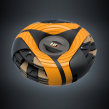
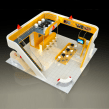
morenosvane21
es un curso muy bueno, me a encantando¡
View translation
Hide translation
rubens_stapia
Muy buen curso de intro, sencillo y claro!
View translation
Hide translation
mohamed_adel_zaiton
excellent course , thank you
aiello47
Molto interessante ed utile
View translation
Hide translation
rota_ilaria89
Ottimo corso: ben strutturato e mai noioso
View translation
Hide translation